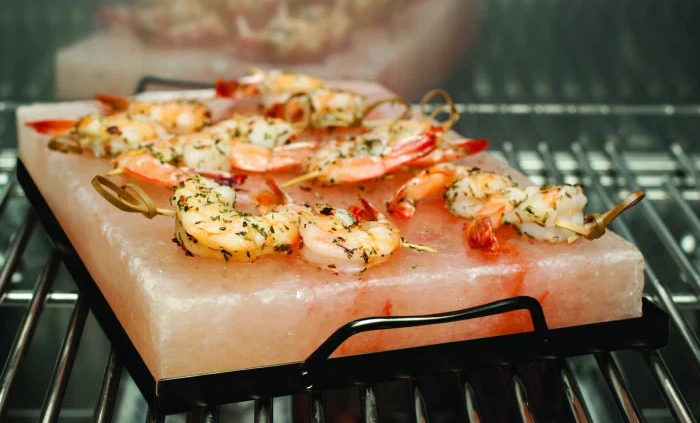Himalayan Salt Bricks: Culinary Adventures in Cooking Beef Steak Meal
Himalayan salt Known for its beauty as well as its unique mineral content, Himalayan salt has been sculpted into cookware for centuries. Now imagine marrying that ancient tool for culinary perfection with the modern day obsession with a perfectly cooked beef steak. Eating a steak on Himalayan salt bricks or blocks is great and adds depth of flavor to your meal but also is an experience that is about the process rather than just a meal. Here we will explore the cooking of the beef steak in Himalayan salt bricks and get the maximum benefits from that delicious cooking technique.
What are Himalayan Salt Bricks?
So, before we dive into all the juicy tips of how to cook a steak, let us first cover the Himalayan salt brick itself. The pink color, which comes from the mineral content in the salt (potassium, magnesium and iron), is their distinguishing feature.
Ways to Utilize Salt Bricks Others serve sushi, cheese, and other foods on them. Some employ them to grill, sear, or bake even. In terms of beef steak cooking, we are interested in them for two reasons in particular, one is the fact that they work as a surface for grilling, which is a fun and exotic way to cook a steak while also soaking it in additional taste.
The Advantages of Using Salt Bricks for Cooking
Salt Block Infusion. The biggest advantage of cooking on a Himalayan salt block is the salt permeating the beef. When you are cooking on a pink salt bricks the salt infiltrates into the beef while it is on the hot pink salt bricks and provides an incredible, but mild salty flavor. When the salt block warms, it gradually gives off minerals that diffuse into the meat, producing a unique taste that you can’t really recreate through traditional grilling.
Cooking Healthier in a way you can get trace minerals that are said to be beneficial for your health. Others argue that cooking on salt blocks will enhance the nutrients in the food you prepare. We don’t guarantee any superhero powers, but it certainly adds to the theater of your cooking.
- Consistent Heat Distribution: salt brick has exceptional thermal conductivity and calorific capacity. A salt brick when heated fills the cooking surface (hence why your steak will cook evenly there) which gives your steak a perfect crispy while still tender interior.
- Wealth of Imagination: Cooking with Himalayan salt bricks is not just about flavor and table it is also about view, Steak on a Pink Salt Block. A visually stunning dish, steak cooked on a pink salt bricks is a great meal for a dinner party or a special event.
- Searing Abilities: Himalayan salt blocks heat to a very high temperature making them great for searing beef steaks. Even if you’re doing up a ribeye, filet mignon or strip steak, the salt brick could give you that caramelized, crispy outside while leaving the inside juicy and tender.
Procedure for Himalayan Salt Brick Beef Steak
Now, the fun part. Now here are the steps for cooking beef steak on Himalayan salt brick. As with any classic method, there are some things to get right to ensure a perfect steak. Imitate these and you’ll be left with a beef steak receiving all the praise around the table.
Step 1: Selecting the Appropriate Salt Brick
Now before you start to select the size of the Himalayan salt brick correctly. If you want to cook a steak, a bigger block (~12×6 in) can give you much more cooking surface area. Leave the black thicker too, choose a block that’s 1.1/2 to 2 inches thickness to maintain heat properly as well.
Step 2: Heat Up the Salt Brick
The most important step of all is preparing your salt brick at the correct temperature. You will want to gradually and evenly heat your Himalayan salt brick in order to ensure that it does not crack or break.
You can set the block on your stovetop, or toss it in the oven to warm it up. For the stovetop, start on low and bring up slowly. If you are heating in the oven, start at around 250°F and then slowly increase to 450°F. This needs to take about 20–30 minutes, so slow and steady is key!
Pro Tip: When heating up a cold salt brick, do not heat it up too quickly. Thermal shock (which results in a huge crack in your salt brick, and trust me: nobody likes that) is why you should always let it heat up gradually.
Step 3: Season the Steak
Prepare your beef steak while the pink salt bricks heats. The important part is the simplicity of the seasoning. You want the salt block to take its effect while tasting the beef. First we dry the steak with a paper towel, getting rid of all excess moisture.
Rub the steak heavily with black pepper, garlic powder, rosemary or thyme. Avoid excessive salt the block has got you cover!
Step 4: Add the Steak to the Salt Block
When your salt block is ready and hot, simply place your steak on the block. You want the steak to hit the surface and hear a nice Sizzle! If you hear this sound, that is a good sign that you are in business.
With a bigger steak, flip every three minutes so both sides cook evenly. You can sometimes even only do one flip if you are dealing with small cuts such as a filet mignon.
Step 5: Sear and cook the steak
One of the real advantages with a Himalayan salt brick is the ability to sear. It creates a beautiful crust on the steak. Monitor the inner temperature of the steak according to how you like your steak done.
- Rare: 120°F–130°F
- Medium-Rare: 130°F–135°F
- Medium: 135°F–145°F
- Medium-Well: 145°F–155°F
- Well-Done: 160°F and above
Apply a meat detector to examine the inner temperature level to make certain it is flawlessly prepare. Better to be a tad under-done and allow it to rest before being cut.
Step 6: Rest and Serve
Get your steak to the correct medium-rare and then take it off from the salt brick and allow it to rest 5–10 minutes. This lets the juices inside the meat redistribute, resulting in steak that is tender and juicy.
Once rested, slice against the grain and chow down. Finishing with a sprinkle of fresh herbs or a drizzle of lemon juice, if desired
FAQs Related To Cooking the Beef Steak Using the Himalayan Salt Blocks
When cooking steak on a salt brick, should I still season the steak?
Yes, it is highly suggest that you season the steak with some pepper and garlic powder and some herbs as well. Just don´t salt it too much as the block will give the meat a salty taste during the process.
Can I use any type of beef steak this way?
Absolutely! Himalayan salt blocks are the ideal cooking tool for ribeye, strip steak, tenderloin or any other cut. Simply adjust cooking times to the thickness of the steak.
How do I clean the salt block after use?
Just let the salt block cool, and then you can use a damp cloth or a brush to carefully clean off any food debris. In the event of persistent stains, rinse the block with warm water (never submerge it). Let the process completely dry the block before keeping it.
Can you cook other foods on a Himalayan salt block?
Definitely! The salt block can be use to cook seafood, vegetables, or even eggs. This can be use for various dishes.
Will my Himalayan Salt Block crack or break?
A draw back of this material is if you are prone to heat a block too fast or expose it directly to high intensity heat, the material might crack. Never heat it fast, and never put it on a hot burning grill.
In Conclusion:
A cooking method, a full experience and connection sewing the ancient art of old world creations with the modern day cooking beef steak on Himalayan salt bricks biting into taste and flavors that connects the soul. It brings all that delicious flavor, that succulent texture, and that stunning visual appeal that will impress just about anyone sitting next to you at the table. And with a few good techniques and a touch of patience, you can take your steak from good all the way to amazing.
Whether you are an advanced cook or a mere enthusiast looking to try something new, step out of your comfort zone and cook with Himalayan salt blocks (again). It’s more fun, tastier and a more healthy way to enjoy your steak to the next level. Happy cooking!









Leave a Reply
Want to join the discussion?Feel free to contribute!